A deer-baiting bust, angling tips, seized ammo: Rolling with a Minnesota conservation officer
Published in Outdoors
WACONIA, Minn. – As light drained from the sky, conservation officer Alexander Birdsall bumped along in his Silverado 2500, crisscrossing isolated farm fields and patrolling for trouble.
His focus west of town was “outlaw area,” as he called it. This time of year, shining deer and shooting from this stretch of gravel are common offenses, and not always caught.
A small dome of light, almost headlamp-like, beamed from a low area about 50 yards off the road. Then it flicked off as Birdsall rolled past.
The light could easily have been missed. Yet Birdsall has had an eye on that spot since he saw a bit of yellow corn poking through snow a few years back. He would be back.
That same afternoon, he checked anglers’ licenses. He discussed lake conditions with a windsurfer. He surveilled a possible baiting location. A deer hunter called him. A federal land officer rang him up about poaching.
“We joke that we work when everyone else plays,” said Birdsall on a blustery November afternoon in Carver County.
The refrain is especially true this time of year. In autumn, conservation officers, or COs, find themselves rushing from one task to another in the woods, fields and waters of Minnesota.
The scene is already busy with pheasant, duck, small-game and bow hunters, and late-season anglers. And conservation officers’ duties have changed and accelerated over the last 20 years, said Robert Gorecki, one of their lead officers at the Department of Natural Resources.
They now enforce a wider array of recreation, from foraging to ATVing to water toys, and routinely respond to vehicle wrecks, domestic disputes and other emergency calls.
The deer gun opening weekend, Nov. 8-9, added the task of monitoring hundreds of thousands of hunters looking to fill their freezers.
“Traditionally, it has been our busiest week,” said Gorecki, assistant law enforcement division director, of his 203 officers. “However, with the increased workload, our slow times just aren’t there like they used to be. We go from one season to another quickly.”
Minnesota DNR conservation officer Alexander Birdsall drives the backroads on his shift Nov. 5 in Carver County. He stops to talk with a man about what kind of shells he was using to hunt pheasants.
A heavy week
Conservation officers filed about 900 reports from events between Nov. 3 and the deer opening weekend, according to the DNR.
They follow up on tips from the public about suspected wildlife law violations. A trail camera and hunting gear were illegally left overnight on public hunting land near Marine on St. Croix. In Lincoln County, a neighbor reported someone shooting pheasants from a vehicle. In Le Sueur County, an officer mediated a tiff between a duck hunter and an angler who were working the same lake.
Back in Waconia, Birdsall reflected on a mix of activity he’s come to expect in what he calls “farm country in city counties.” He started work in the Waconia field station in 2016. Birdsall is the lone officer for most of Carver County, where the west metro meets rural Minnesota.
That can make his domain both appealing and busy, with Hennepin County, the state’s most-populous county, as a neighbor. Four COs patrol Hennepin County.
“You can get in a quick hunt in a short drive,” he said.
Birdsall said it’s common for people to trespass on private property without knowing it. He has had to educate people about the rules of taking home roadkill deer. He has seen sawed-off heads and antlers and abandoned carcasses. Most rural folk know that they need to contact him to get a free possession tag.
“It gives hunters a bad look,” Birdsall said.
Baiting also doesn’t represent hunters well. Birdsall issued one of more than 60 deer-baiting citations written during the week across the state. Other offenders transported uncased or loaded firearms in vehicles. They hunted on prohibited state land, or put up illegal stands in Wildlife Management Areas. Some hunters didn’t wear the required blaze orange. All told, COs issued nearly 140 citations over those seven days.
At one point, his radio crackled with news of a vehicle emergency. He considered going, but knew others nearby would get there sooner. The need for CO assistance is even more pronounced in rural areas, Gorecki said. COs like Birdsall are at times the closest officers able to respond.
Birdsall puts about 200 miles on his Silverado most days. He parked at a popular shore fishing spot near the Crow River dam in Watertown.
Good-natured and friendly, he checked anglers’ licenses. There were still northern pike to be had. He’d catch up with a few anglers on an isolated channel of the Minnesota River. “Where are they biting?” one of them asked. Birdsall dispenses fishing tips, too.
He returned to a high spot that he has surveilled over time to scope a corn field below that abuts a tree line — a possible location for an illegal stand or baiting operation.
Later, he was on the prowl at a spot popular with bow hunters. He knows some might want a last crack at whitetails before the firearms opener, when gunfire will spook deer and perhaps make them harder to hunt.
His domain can extend beyond state land, too. He has full credentials to enforce game law on federal land. He pulled over when he spotted a solitary truck and then a flash of blaze orange a few hundred yards off. There was a hunter, with his dog, in a Minnesota Valley National Wildlife Refuge prairie and walking toward Birdsall.
Birdsall asked about the man’s hunt — it was slow — before asking for one of the hunter’s shells. It had lead shot, which is illegal on federal land. On some state land, lead is allowed for upland birds and some migratory species, like doves.
“If you are hopping parcel to parcel, you might want to keep it steel,” he told the hunter.
Birdsall warned the hunter and took one of his shells for evidence. That Nov. 5 warning was among nearly 240 issued across Minnesota over the week.
Public calls keep coming
Some tips from the public end in citations or warnings, too. The calls are increasing year over year, Gorecki said. “They call us basically 24 hours a day. The expectation is that we are there, and we answer.”
Birdsall’s phone always is on, and he fields four or five calls a day. Some are tipsters. Others want to know the law. He is glad for proactive calls, adding that about 95% of the people he encounters are doing the right thing. “If they aren’t, it is out of ignorance.”
That resonates afield. Birdsall said he gives the public the benefit of the doubt in some instances where laws are broken. He said he ponders “if the juice is worth the squeeze.”
“There are multiple avenues to the same outcome,” he said. Warnings rather than a citation can lead to compliance, too. “If there is obvious intent — breaking the law — that’s different.”
The next day, Birdsall followed up on the suspicious light from the previous night.
There was no mystery this time. A pile of corn was there on the ground.
He drove back to the site late in the day.
Watching from the road, Birdsall spotted a hunter in a tree stand, over the corn. He moved in. Baiting is a misdemeanor, and he will lose hunting privileges for a year.
“He owned the fact he knew it was illegal,” Birdsall said.
____
©2025 The Minnesota Star Tribune. Visit at startribune.com. Distributed by Tribune Content Agency, LLC.
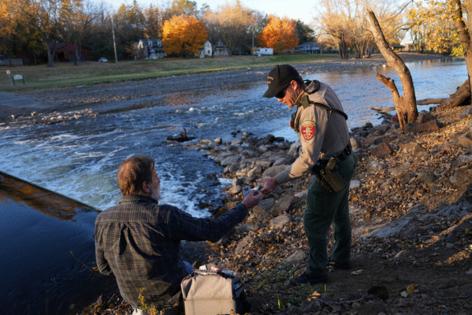
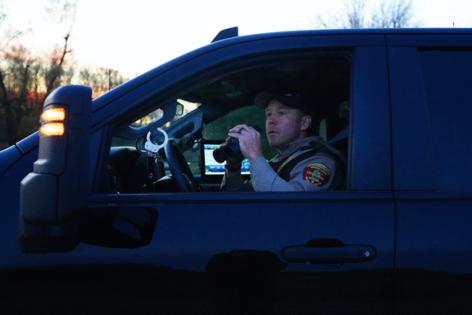
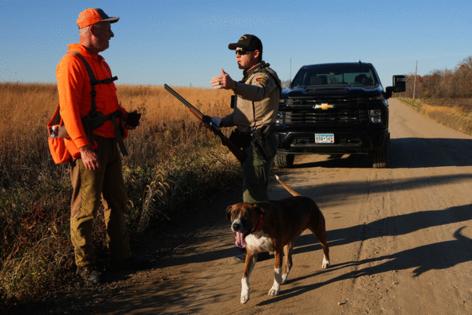
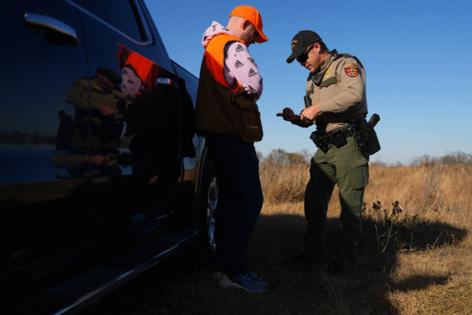
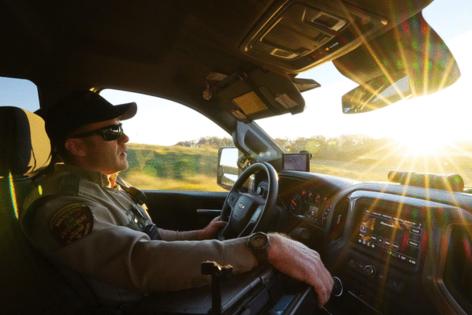











Comments